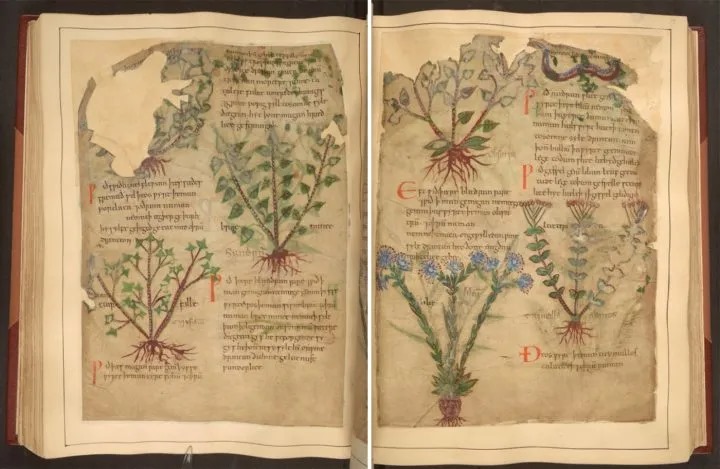The Herbal
Archaeological evidence suggests people were intentionally using and cultivating herbs as medicine from as far back as the Upper Palaeolithic. For millennia, healing wisdom was passed down the generations through the oral traditions until plant medicine was first recorded in manuscripts like Dioscorides' 'De MAteria Medica' (c.60 BC, originally written in Greek). Works like The Herbal of Pseudo-Apuleius (4thC AD), and the Anglo-Saxon 'Lacnunga' dating to the 10th or 11th century AD initially detailed remedies rather than the plants themselves.
It was really during the Middle Ages that the beautifully illustrated compendiums of herbs and plants were created - the first true 'herbals'. Manuscripts like the 15th Century Italian 'Erbario' illustrated the use of plant medicines going back centuries. Through these extraordinary works, usually written in Latin, we are able to trace a line back through time, connecting the rich heritage of herbal medicines to the earliest people. Yet despite its tradition as folk medicine, these Latin texts moved much learned wisdom out of the hands of the common folk into the domain of scholars and academics, and the early Physicians...
However, In the 1600s Nicholas Culpeper revolutionised accessibility of herbal medicine back to the lay practitioner, by publishing his 'Complete Herbal' in the English vernacular. Elisabeth Blackwell wrote her gorgeously illustrated and seminal 'A Curious herbal' in the 18th Century, and by the time of Mrs Grieve wrote 'A Modern herbal', collated from surviving practices and historical works, in the early 20th century, herbals were firmly back in the domain of the people.
Now, any Materia Medica that most herbalists create for themselves is an invaluable resource made for practical as well as intellectual use, and while They may be functional, they can also be beautiful!.
Below are a few of the most enduring plants of our herbal heritage, with botanical paintings from selected Early Modern Herbals...
Yarrow
Achillea millefolium
Named after Greek hero, Achilles, who purportedly used the plant on the battlefield to staunch the blood of his warriors, Yarrow is often used to treat cuts and bleeding wounds. Its bitter virtues support the gut and liver. It can help regulate the menstrual cycle and can relieve colds and congestion.
Garlic
Allium sativum
Garlic is an excellent antimicrobial detox herb. It has been used since the first century AD for heart disease and infections. Louis Pasteur noted its antibiotic virtues in 1858. It can be used to treat infections of many kinds including colds and flus. It can help increase circulation and improve overall immune health.
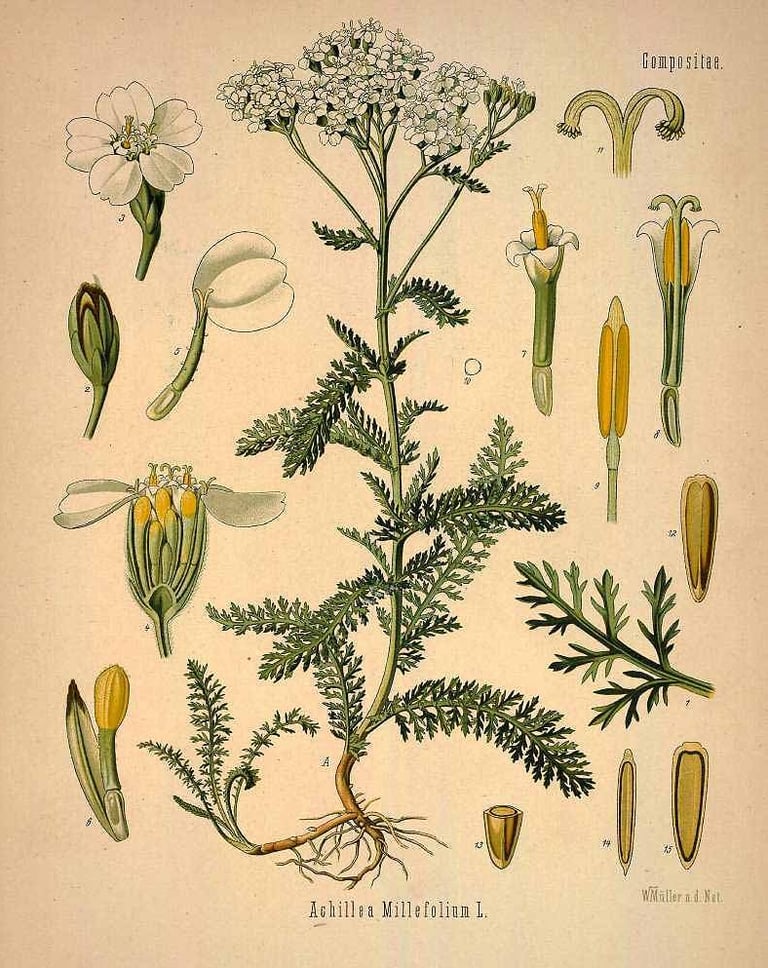

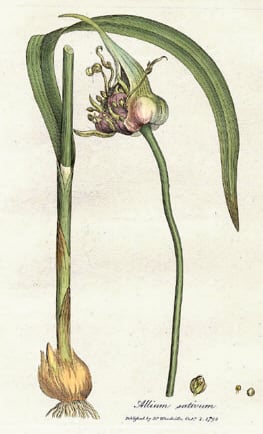

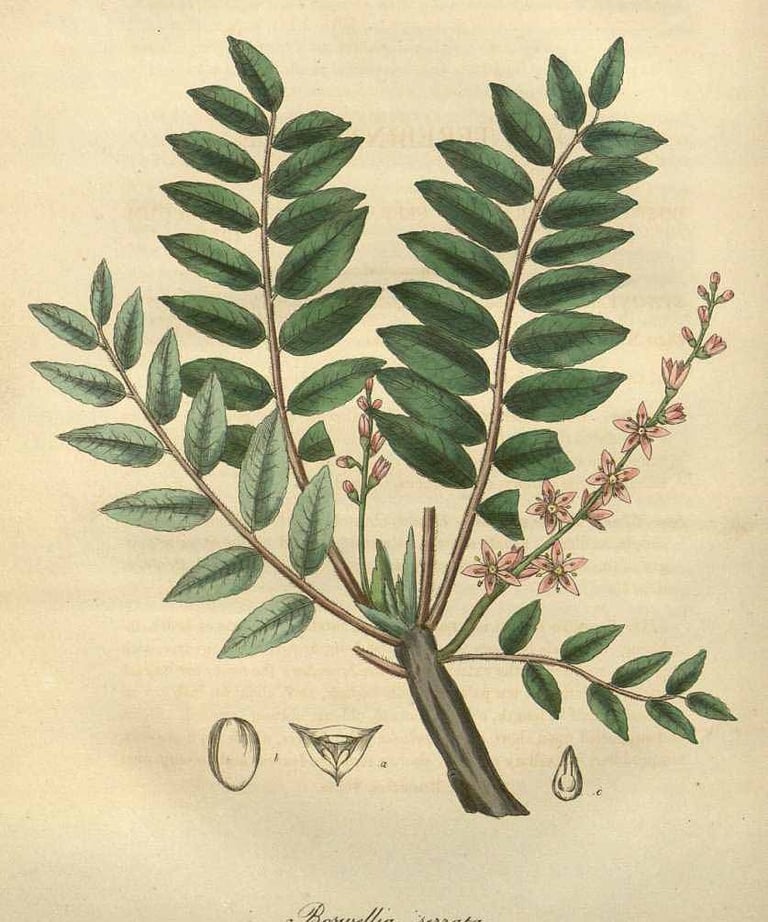

Frankincense
Boswellia serrata
Brought to Britain from the Middle East, Frankincense has been used as medicine, essential oils and incense. It is a powerful reliever of pain. It can reduce inflammation and can improve healing post-surgery. It has decongestant and expectorant properties helpful in relieving symptoms of respiratory illness. It has been used topically to treat skin infections, boils and burns.
Eyebright
Euphrasia officinalis
A delicate flowering plant, usually found on dry, sunny hillsides has long been famed for its ability to soothe and remedy eye problems. It is soothing to the mucous membranes of the eyes, nose and upper respiratory tract. Its bitter properties can improve digestive health, and favoured by the Tudors as an addition to wine for this reason. It can also be used to treat catarrh, sore throats and mouth ulcers,
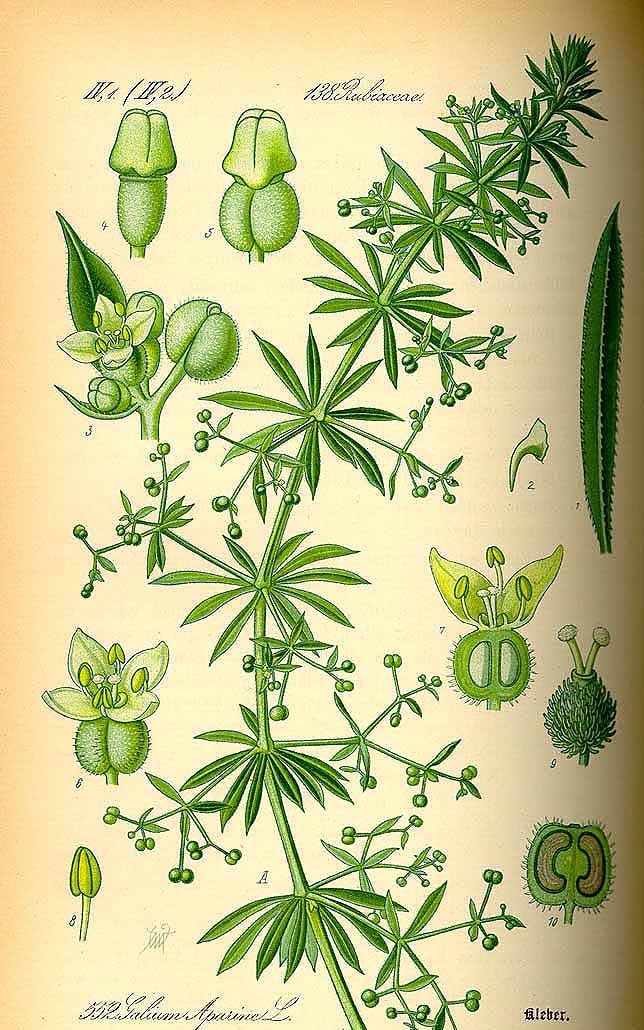

Cleavers
Galium aparine
A humble hedgerow plant native to Europe, cleavers, or goosegrass, is member of the bedstraw family valued for their scent as a strewing herb in the Middle Ages. It is a powerful lymphatic supporter, shifting metabolic waste through the kidneys and improving overall urinary and circulatory health. It is cooling and soothing, and can be used internally as a spring detox herb, or topically as a wash for various skin disorders.
St John's Wort
Hypericum perforatum
A perennial that blooms in midsummer around St Jon's Day (24th June). According to the Doctrine of Signatures, the small 'dots' on the leaves containing the red pigment indicates its power to stop bleeding and heal wounds. It has long been used to treat 'melancholia', ward off magical influences that cause disease It is anti-inflammatory and antimicrobial. It has been used to treat wounds, cuts and bruises.
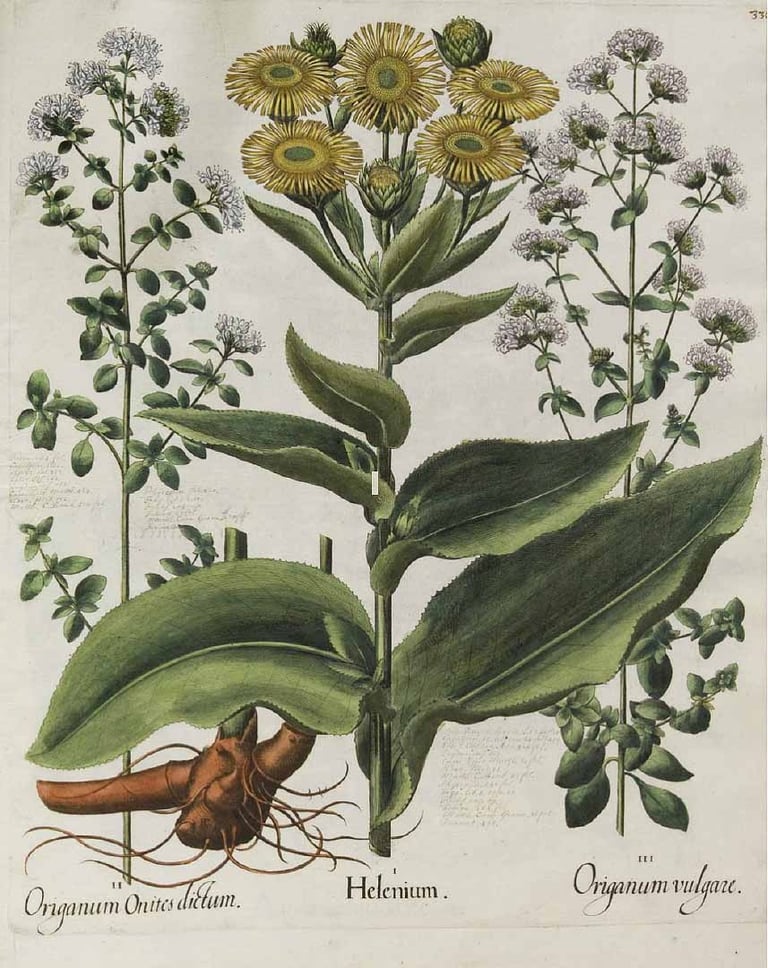

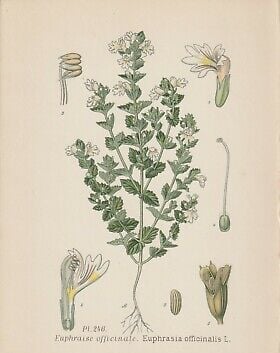

Elecampane
Inula helenium
Sacred to the ancient Britons, and protective against the magic of elves, it was also known as Elfdock. Infused in oil it was treatment for snake and spider bites by the Romans. Culpeper recommended it to warm a cold and windy stomach, and it is still used as a warming expectorant for chesty coughs and colds
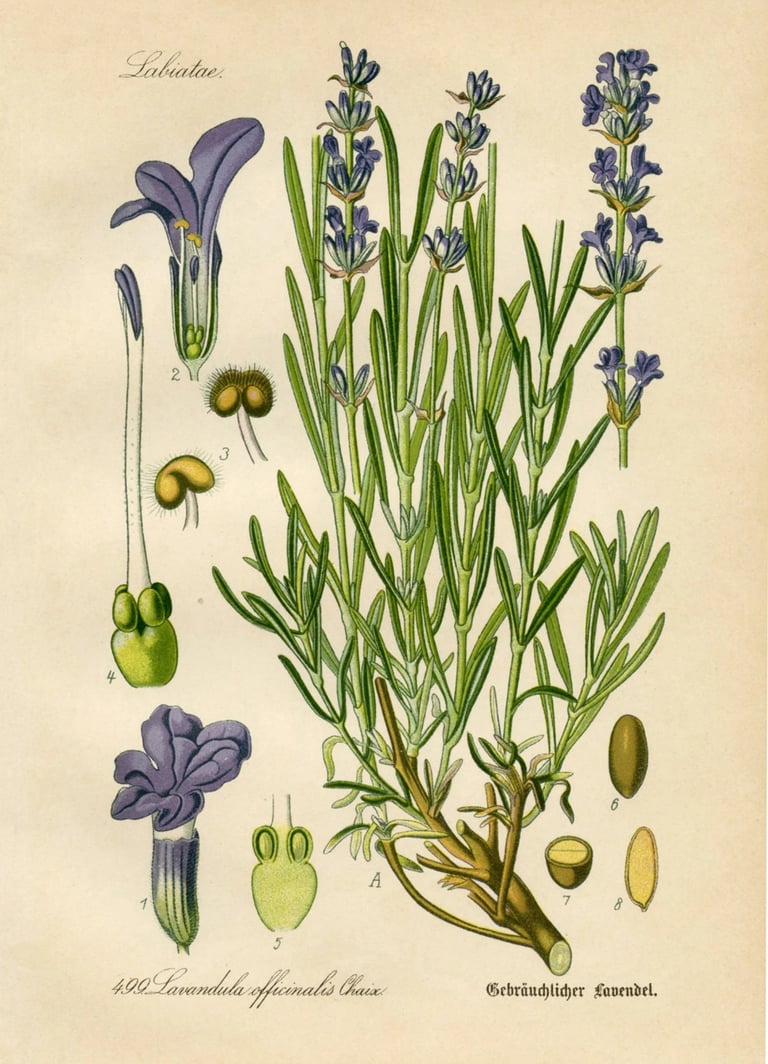

Lavender
Lavandula officinalis
Lavender has been a staple of the herbal apothecary in Britain since Roman times, and is still one of the most widely used herbs. Its soothing scent promotes restfulness and aids sleep. It is a superb skin healer and often used for burns and scalds. It is antibacterial and has long been used to treat infections and wounds.
Above is an example of an early illustrated Herbal, known as the Cotton MS 'Vitellius C', produced in Canterbury, England 900-1100AD. Held by the British Library.
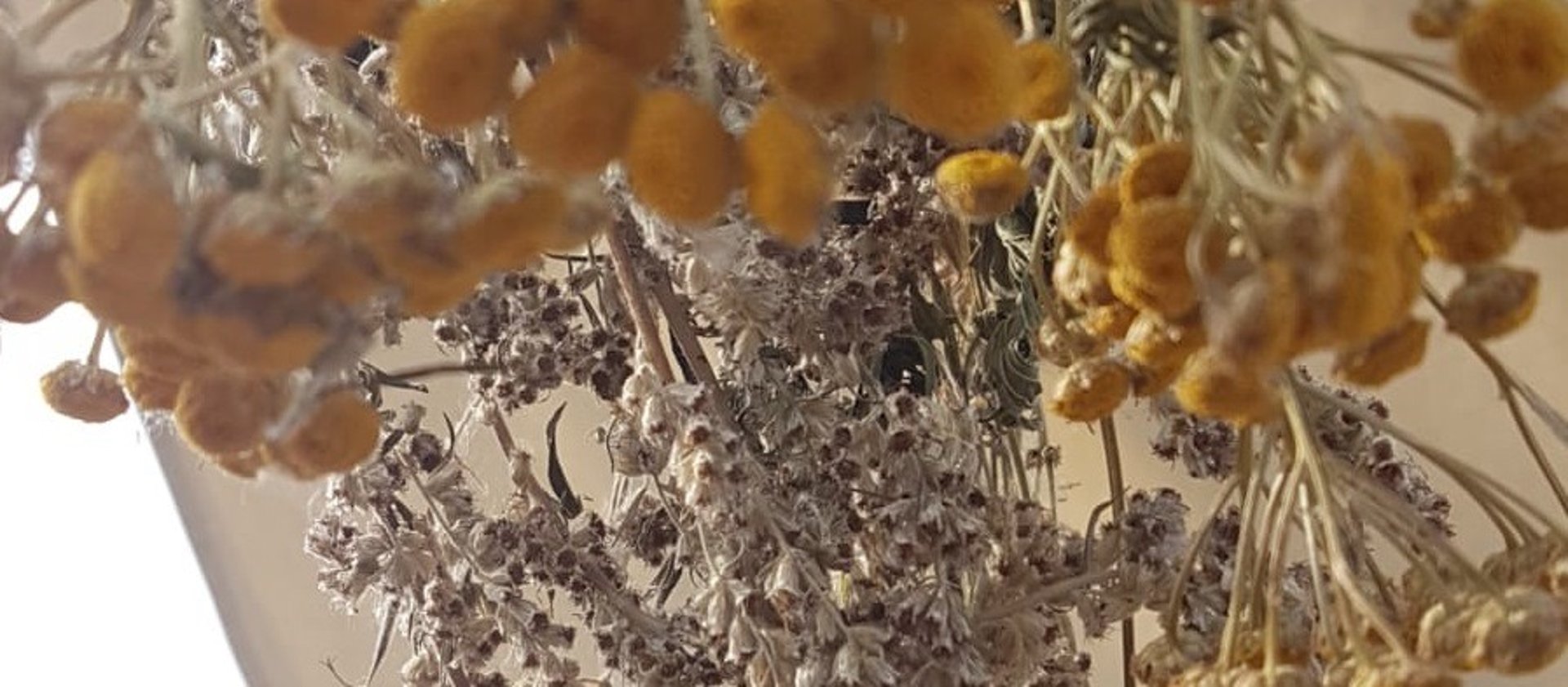
© The Historical Herbalists 2023
Photos © Jaye Gould
The Historical Herbalists CIC
hello@historicalherbalists.com






The Historical Herbalists CIC No.: SC866573
